Cookware Controversy - Its Health, And Environmental Concerns

Cookware is one of the most important elements in any kitchen. Its primary function is to hold up to the cooking process and ensure one’s food results in the best color, texture, taste, and appearance. Because of this, the cookware industry is a multi-billion dollar market with a plethora of products made out of different materials designed to improve some aspect of the cooking process.
But there is mounting evidence that cookware can also have an impact on one’s health. This is because of the safety of using specific materials in the cookware. The most common types of cookware include stainless steel, cast iron, enameled cast iron, ceramic, copper, aluminum, and non-stick. However, each has its own benefits and drawbacks.
The most highly rated cookware includes:
Stainless steel cookware
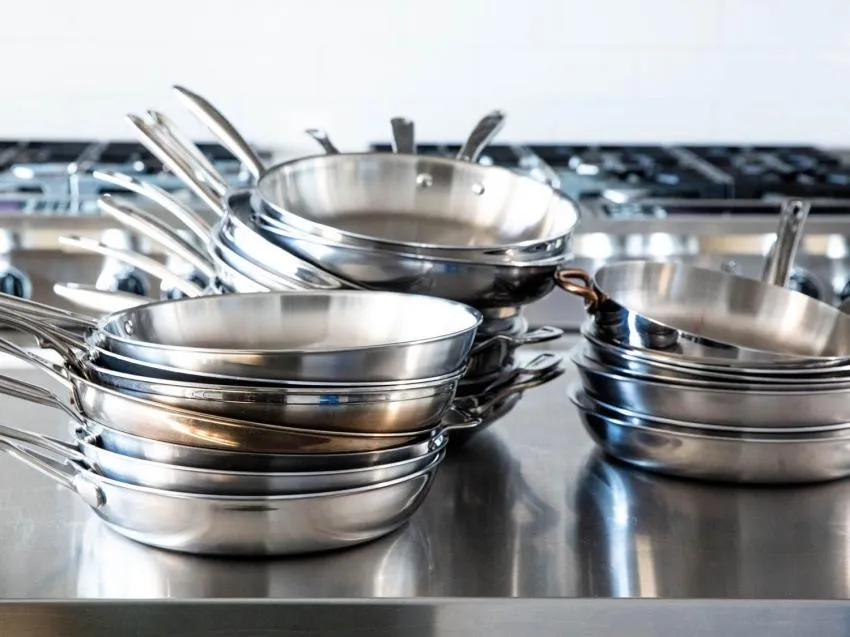
Stainless steel is steel with a minimum of 10.5% chromium by mass, but it also contains nickel, carbon, and iron (1). It is typically graded based on nickel content. And the higher the nickel content, the less prone to corrosion the cookware is. The 200 series is more prone to corrosion and is best used for storage containers, while the more common 304 series is used for cookware.
The 316 series contains molybdenum along with the other metals, increasing corrosion resistance even further (2). A well-researched issue with stainless steel is its leaching of metals into foods. Newer stainless steel pots and pans tend to release more metals into food than older ones, but generally, leaching increases with cooking time and PH (3).
This may be problematic since nickel exposure can cause allergic contact dermatitis in some individuals (4). Still, most researchers agree that stainless steel is a safe cookware option. If choosing stainless steel, it is recommended to check third-party review sites for consumer feedback on specific brands, as cookware will vary from manufacturer to manufacturer.
Cast iron cookware
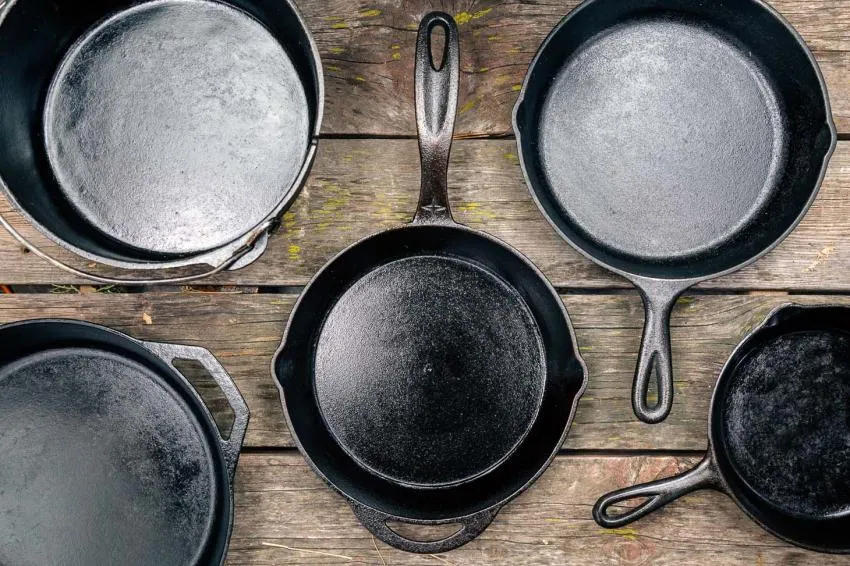
Cast iron contains iron, 2-4% carbon, silicon, and manganese (5). A positive attribute of cast iron is its versatility across heat sources, including stovetop, oven, and campfire. It is also generally free of contaminants such as lead, which has well-known toxic effects on the kidneys and brain (6).
Those who dislike cast iron say that drawbacks include its heavyweight and difficulty to clean. Cast iron does leach iron, and this will increase with longer cooking times, lower pH, foods that are stirred more often, and newer pans (6).
Although this is the case, iron is an essential nutrient and cast iron is actually considered to be one of the safer forms of cookware. Researchers do suggest, however, those home cooks who use cast iron do not use it for every meal and use other types of cookware for long-simmering or highly acidic foods to reduce the chance of too much iron (7).
Enameled cast iron cookware
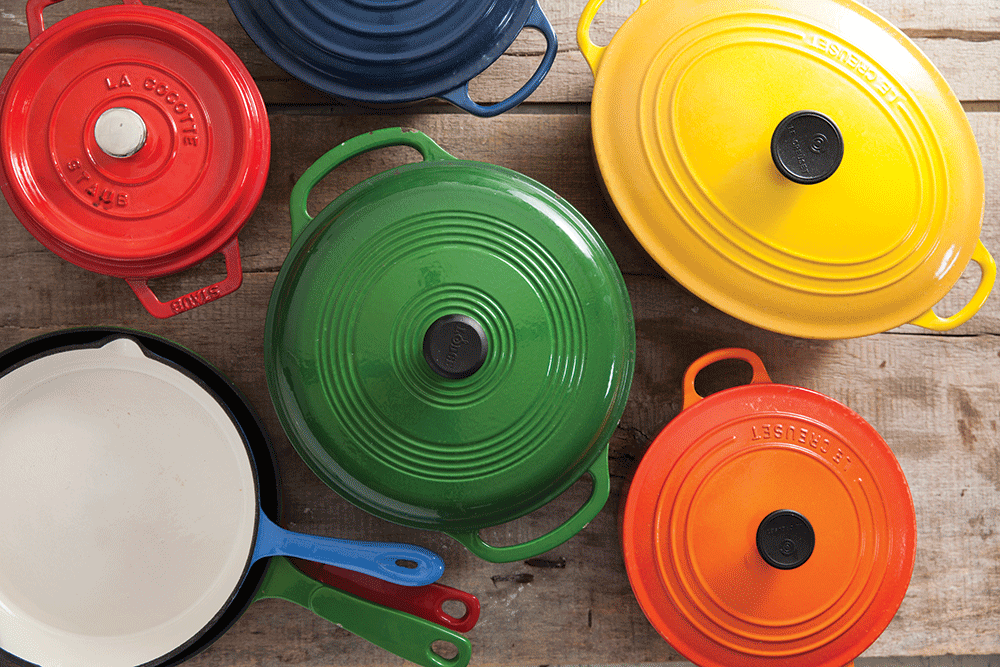
Enameled cast iron such as Le Creuset is currently very popular and has historically been considered safe. However, in recent years its safety has been somewhat controversial. Many of the brightly colored enamel shells on the outer portion of these pots, pans, and dutch ovens contain cadmium and sometimes lead (8).
This seems to be especially true for the red, orange, and yellow enameled cast iron. Cadmium has been shown to have adverse effects on human health, including renal toxicity and potential bone demineralization.
Although some manufacturers claim their products are up to California Prop 65 standards and claim to do third-party testing, individuals have had products tested and still sometimes find contaminants on the inner portion of the cooking surfaces (7).
Other metals used in cookware include carbon steel, copper, and aluminum.
Carbon steel cookware
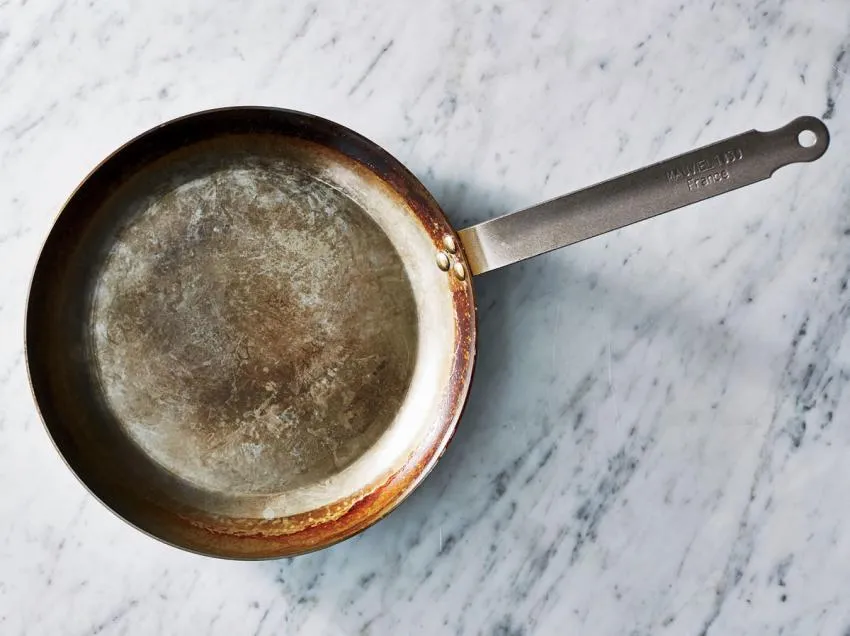
Carbon steel cookware is often around 99% iron and 1% carbon (9). Since these are the same materials used in cast iron, there are many similarities between these two types of cookware.
However, carbon steel cookware tends to be more expensive than cast iron, but still more affordable than other materials like stainless steel.6 Woks used in Asian cuisine are often made of carbon steel.
Desirable qualities of this material include being a non-toxic material, relatively nonstick (when seasoned and maintained well), lighter weight than cast iron, and can conduct and withstand heat very well. Carbon steel cookware can be used on the stovetop and in the oven (10).
Copper cookware
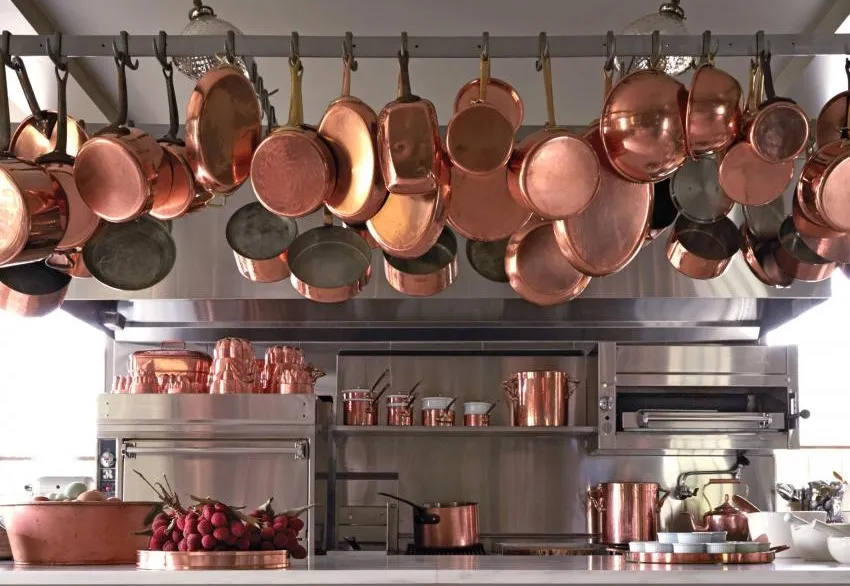
Copper’s claim to fame is its great ability to conduct heat, but its high price can deter many people. Copper’s high reactivity is also important to consider, most manufacturers will line the inside with a different metal (6). Yet, copper is known to react with acidic foods and can cause the taste to turn somewhat metallicity.
Cleaning and maintaining copper cookware can be time-consuming. Non-abrasive cleaners should be exclusively used to clean copper cookware, and the cookware needs to be polished in order to maintain integrity. Another factor to consider is that copper cookware will not work on induction stovetops, but can be used in the oven.
Anodized aluminum cookware
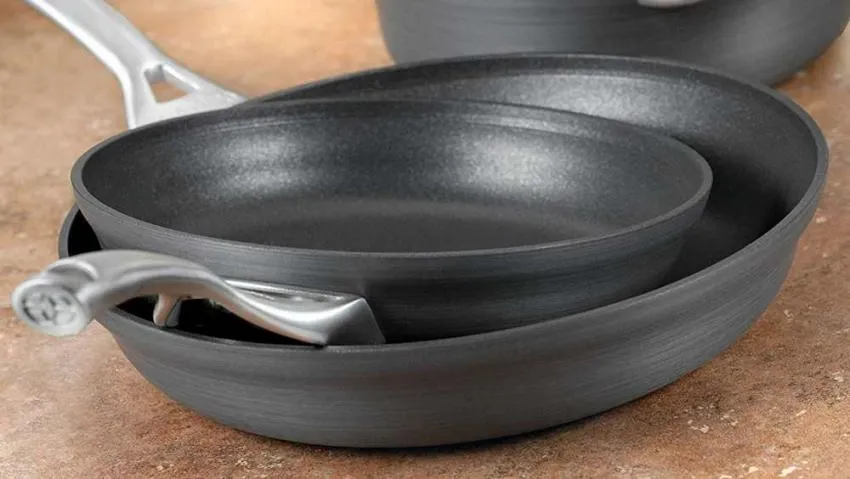
Anodized aluminum is the most common type of aluminum cookware, this chemical process makes the material harder and less reactive (9). This material also conducts heat better than most other cooking metals and is lightweight. On the other hand, aluminum cookware raises health concerns.
A study from 2017 looked at harmful metals leached during cooking from aluminum pots, found potentially harmful levels of aluminum, arsenic, lead, and cadmium leached from different pots tested from developing countries which could negatively impact the population's health (12).
These findings vary per country and pot construction. A confounding factor in the leaching of aluminum is the pots’ corrosion—this might be the most significant risk factor which can be applied to other materials as well.
One final, yet large category of cookware is the non-stick variety.
Non-stick cookware involves both stovetop and oven-safe equipment but is distinct from other cookware because it is coated in a fluoropolymer coating. This coating is very popular due to its ease of use with its anti-stick surface, its ability to cook with less oil–eliminating excess fat from the diet–and it can often be lighter and cheaper than other metal cookware options on the market.
Teflon is the name for the most common fluoropolymer coating, originally produced by the big chemical company, DuPont, in the late 1930s (13,15). It refers to the class of chemicals within the PFC (perfluorinated chemicals) family and is made specifically from PTFE (polytetrafluoroethylene), otherwise known as C8.
The creation of this PFC was an accidental discovery meant to be used to seal in the noxious gas during the development of the atomic bomb in WWII (16). However, due to its non-corrosiveness, low friction coefficient, and water and lipid repellant abilities, it has been widely used since the 1940s across various industries, including textiles as a fiber protectant (most notable carpeting), food packaging with especially sandwich/deli wrappings and beverage cartons, cookware in both stovetop and baking equipment, and even dental floss (13-16).
So why does Teflon get the bad rep? Up until 2013, it was originally made out of other PTFA’s (perfluoroalkyl substances), PFOS (perfluorooctane sulfonate), and PFOA (perfluorooctanoic acid), which research in the past decade has presented concerns as far as their human health effects (16).
These PFASs have been associated with thyroid dysfunctions, immune disorders, liver problems, increased levels of uric acid, osteoarthritis, and high exposure levels may even be associated with various cancers, cardiovascular problems, and birth defects (16,17). However, it’s important to note that the most conclusive evidence has come from trials on animals, not humans.
In fact, all studies conducted on people are hard to associate with specific health risks because we can’t ethically test PFAS exposure on humans, and those with high exposure (people that tend to live closer to factories and chemical plants) definitely have other confounding exposures and health concerns as well.
For this reason, most organizations can only classify these compounds as possibly carcinogenic and health concerns to humans and call for more research before upgrading this stance. However, one definite health-related concern we are sure of with people is that when heated to 500 degrees Fahrenheit, the PTFE and other PFAS’s break down and emit a noxious gas that can cause “polymer fume fever,” basically the flu, and we know this gas is also lethal to birds (18).
Due to these health concerns and concerns for the environment, the EPA and 8 major manufacturing companies agreed to a “stewardship program” in 2006 to phase out these chemicals, especially PFOA, by 95% in 2010, and then 100% by 2015 (18).
Though the program called for yearly progress reports, the EPA does not regulate the use of these chemicals and so no penalties were implemented to ensure these goals. However, due to consumer awareness, the market demands have changed, thus leading many brands to adapt to the materials being used.
Consequently, many cookware brands will advertise their product as PFOA free or as responsible PFTE. Though PTFE and other compounds being used as nonstick coatings (like nanoceramic), may have fewer health concerns, these compounds have not been around as long and certainly have no research to back this up (13,18).
Thus, the consumer must be very cautious in researching what material is used in their non-stick cookware. For example, the popularly environmentally friendly and health branded “Always Pan” or “GreenPan,” contain “responsible PTFE” and PFAS replacements, using silicon-derived nano-ceramic technology.
However, we know these coatings like other nonstick coatings have the tendency to chip and there are still concerns about nanoparticle leaching of this silicon and other binder materials that are in them (13,18).
Does this mean we need to stray away from all nonstick cookware or throw out the ones we do have? Not necessarily, but there are certain precautions that most manufacturers will claim.
Primarily, these involve not overheating the cookware above 500 degrees Fahrenheit and ventilating the kitchen well when using, not using metal or other abrasive cooking utensils or cleaning implements, and disposing of these cookwares regularly, especially if purchased before 2013, and definitely when wear and flaking begin to show that the cookware is no longer in good shape (13-16).
Based on available research, it appears that the safest cookware option remains to be cast iron. This option is both non-toxic and has the lowest potential of adverse effects on human health.
Compared to other types of cookware, cast iron also has great longevity when taken care of properly, making the investment worth the cost.
However, in comparing all consumer cookware options, the bottom line is to research the brand of cookware you intend to purchase, make sure you use it the way the manufacturer recommends, take care of it properly, and know when to replace it.
References
- Guarneri, F., Costa, C., Cannavò, S. P., Catania, S., Bua, G. D., Fenga, C., & Dugo, G. (2016). Release of nickel and chromium in common foods during cooking in 18/10 (grade 316) stainless steel pots. Contact Dermatitis, 76(1), 40–48. doi: 10.1111/cod.12692
- Kamerud, K. L., Hobbie, K. A., & Anderson, K. A. (2013). Stainless Steel Leaches Nickel and Chromium into Foods during Cooking. Journal of Agricultural and Food Chemistry, 61(39), 9495–9501. doi: 10.1021/jf402400
- Warshaw, E. M., Aschenbeck, K. A., Dekoven, J. G., Maibach, H. I., Taylor, J. S., Sasseville, D., … Mathias, T. (2018). Epidemiology of pediatric nickel sensitivity: Retrospective review of North American Contact Dermatitis Group (NACDG) data 1994-2014. Journal of the American Academy of Dermatology, 79(4), 664–671. doi: 10.1016/j.jaad.2018.02.071
- CDC - Lead: Health Problems Caused by Lead - NIOSH Workplace Safety and Health Topic.(2018, June 18). Retrieved from https://www.cdc.gov/niosh/topics/lead/health.html.
- Best Cookware Buying Guide - Consumer Reports. (n.d.). Retrieved December 11, 2019, from https://www.consumerreports.org/cro/cookware/buying-guide/index.htm
- Are you cooking with these? Cookware considerations. (2018, May 9). Retrieved from https://www.pca.state.mn.us/featured/are-you-cooking-these-cookware-considerations.
- Bernard, A. (2008, October). Cadmium & its adverse effects on human health. Retrieved from: https://www.ncbi.nlm.nih.gov/pubmed/19106447.
- A Comprehensive Comparison of Cookware Materials. PartSelect.com. https://www.fix.com/blog/comparison-of-cookware-materials/#Sources. Accessed December 11, 2019.
- Best Cookware Buying Guide - Consumer Reports. (n.d.). Retrieved December 11, 2019, from https://www.consumerreports.org/cro/cookware/buying-guide/index.htm
- Bold C. A Guide to the Best Material for Pots and Pans: A Pros and Cons List. Kitchn. https://www.thekitchn.com/a-guide-to-the-best-material-for-pots-and-pans-pros-cons-168241. Published May 2, 2019. Accessed December 11, 2019.
- Weidenhamer JD, Fitzpatrick MP, Biro AM, et al. Metal exposures from aluminum cookware: An unrecognized public health risk in developing countries. Science of The Total Environment. 2017;579:805-813. doi:10.1016/j.scitotenv.2016.11.023.
- Bell, E. (2019). What Is PTFE? Understanding the Coating Used in Nonstick Cookware. Retrieved December 9, 2019, from Misen website: https://www.misen.co/blogs/news/what-is-ptfe
- Begley, T. H., White, K., Honigfort, P., Twaroski, M. L., Neches, R., & Walker, R. A. (2005). Perfluorochemicals: Potential sources of and migration from food packaging. Food Additives and Contaminants, 22(10), 1023–1031. https://doi.org/10.1080/0265203050018347
- Basic Information on PFAS: Per- and Polyfluoroalkyl Substances (PFAS) . (n.d.). Retrieved December 8, 2019, from https://www.epa.gov/pfas/basic-information-pfas
- What Are PFOA and PFOs and How Dangerous Are They? (2018). Retrieved December 12, 2019, from Environmental Pollution Centers website: https://www.environmentalpollutioncenters.org/news/what-are-pfoa-and-pfos-and-how-dangerous-are-they/
- Schlummer, M., Gruber, L., Wolz, G., Still, M., Fiedler, D., Sölch, C., & Fengler, R. (2012). Impact of food processing with non-stick cookware on PFAS levels in diet.
- Sajid Muhammad A4 - Ilyas, Muhammad, M. A.-S. (2017). PTFE-coated non-stick cookware and toxicity concerns: a perspective. Environmental Science and Pollution Research International, v. 24(30), 23436-23440–2017 v.24 no.30. https://doi.org/10.1007/s11356-017-0095-y
Opinions and Perspectives
I've been using stainless steel cookware for years and never knew about the metal leaching issue. Makes me wonder if I should switch to something else.
The article really opened my eyes about non-stick cookware. I had no idea about the PFAS chemicals and their potential health risks.
Actually, I switched to cast iron last year and I love it. Yes, it's heavy but the iron leaching is actually beneficial for someone like me who tends to be anemic.
Does anyone know if those trendy ceramic-coated pans are actually safer? The article didn't cover them much.
Interesting timing, I just tossed all my old Teflon pans after reading about the polymer fume fever. Not taking any chances with my family's health.
You might be overreacting about Teflon. The article clearly states that most health concerns are from pre-2013 manufacturing processes.
I'm particularly concerned about the cadmium in enameled cookware. My Le Creuset dutch oven is bright red and now I'm worried.
The environmental impact of non-stick cookware production really troubles me. We need to think beyond just our personal health.
Has anyone tried carbon steel? The article mentions it's similar to cast iron but lighter.
I find it fascinating that Teflon was accidentally discovered during atomic bomb development. Talk about unintended consequences!
My grandmother's cast iron skillet is still going strong after 50 years. You really can't beat that kind of longevity.
Anyone else bothered by how these cookware companies can advertise as PFOA-free but still use other questionable chemicals?
The thing about cast iron that worries me is cooking acidic foods. I make a lot of tomato-based sauces.
In response to the acidic foods concern, that's why I keep both stainless steel and cast iron. Different tools for different jobs.
I'm surprised copper cookware didn't get more attention in the article. Its heat conductivity is amazing.
Just ordered my first carbon steel wok after reading this. Excited to try it out!
The polymer fume fever thing is scary. I had no idea high heat could make non-stick cookware release toxic gases.
Looks like we all need to be more mindful about our cookware choices. I appreciate how thorough this article is.
Anyone else feeling overwhelmed by all these potential risks? It seems like every option has some drawback.
I've been using the same stainless steel set for 15 years with no issues. Maybe we're overthinking this.
The part about birds dying from non-stick pan fumes really got to me. That's terrifying.
Learning about the EPA's voluntary phase-out program makes me skeptical. Why wasn't it mandatory?
The cost factor is important too. Not everyone can afford to replace all their cookware with safer options.



